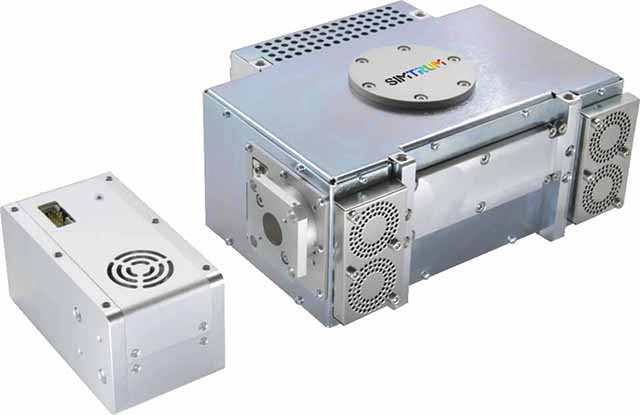|
|
.jpg) |
LA-AR01-FTIR-OEM010-060 -4TE
Spectral Range :2-6 μm ,Detector Peak D*: >1x10¹¹ cm Hz¹/²W⁻¹ , Signal - to - noise ratio: >80'000:1 , Resolution (unapodized) : 0.5, 2, 4, 8 cm⁻¹ (user selectable)
|
|
4-6 Weeks |
$27008.00 |
|
|
|
.jpg) |
LA-AR01-FTIR-OEM010-085-4TE
Spectral Range: 1.5 - 8.5 μm, Detector Peak D* : >8x10⁹ cm Hz¹/²W⁻¹ ,Signal - to - noise ratio: >40'000:1 ,Resolution (unapodized) : 0.5, 2, 4, 8 cm⁻¹ (user selectable)
|
|
4-6 Weeks |
$27008.00 |
|
|
|
.jpg) |
LA-AR01-FTIR-OEM010-120-4TE
Spectral Range: 2 - 12 μm ,Detector Peak D*: >4x10⁹ cm Hz¹/²W⁻¹ ,Signal - to - noise ratio : >40'000:1 ,Resolution (unapodized) : 0.5, 2, 4, 8 cm⁻¹ (user selectable)
|
|
4-6 Weeks |
$27008.00 |
|
|
|
.jpg) |
LA-AR01-FTIR-OEM010-160-LN2
Spectral Range: 2 - 16 μm ,Detector Peak D*: >5x10¹⁰ cm Hz¹/²W⁻¹ ,Signal - to - noise ratio : >70'000:1, Resolution (unapodized) : 0.5, 2, 4, 8 cm⁻¹ (user selectable)
|
|
4-6 Weeks |
$29568.00 |
|
|
|
 |
LA-AR01-FTIR - OEM01-060-4TE
Spectral Range :2 - 6 μm Detector Peak D* :>1x10¹¹ cm Hz¹/²W⁻¹ Signal - to - noise ratio :> 80'000:1 Resolution (unapodized) :0.5, 2, 4, 8 cm⁻¹ (user selectable)
|
|
4-6 Weeks |
Request for quote |
|
|
|
 |
LA-AR01-FTIR-OEM011-085-4TE
Spectral Range:1.5 - 8.5 μm, Detector Peak D*: >8x10⁹ cm Hz¹/²W⁻¹ ,Signal - to - noise ratio: >40'000:1, Resolution (unapodized) : 0.5, 2, 4, 8 cm⁻¹ (user selectable)
|
|
4-6 Weeks |
Request for quote |
|
|
|
 |
LA-AR01-FTIR - OEM011-120-4TE
Spectral Range:2-12 μm ,Detector Peak D* :>4x10⁹ cm Hz¹/²W⁻¹ ,Signal - to - noise ratio :>40'000:1 ,Resolution (unapodized) : 0.5, 2, 4, 8 cm⁻¹ (user selectable)
|
|
4-6 Weeks |
Request for quote |
|
|
|
 |
LA-AR01-FTIR-OEM011-160-LN2
Spectral Range:2-16 μm ,Detector Peak D* :>5x10¹⁰ cm Hz¹/²W⁻¹ ,Signal - to - noise ratio:>70'000:1, Resolution (unapodized) : 0.5, 2, 4, 8 cm⁻¹ (user selectable)
|
|
4-6 Weeks |
Request for quote |
|